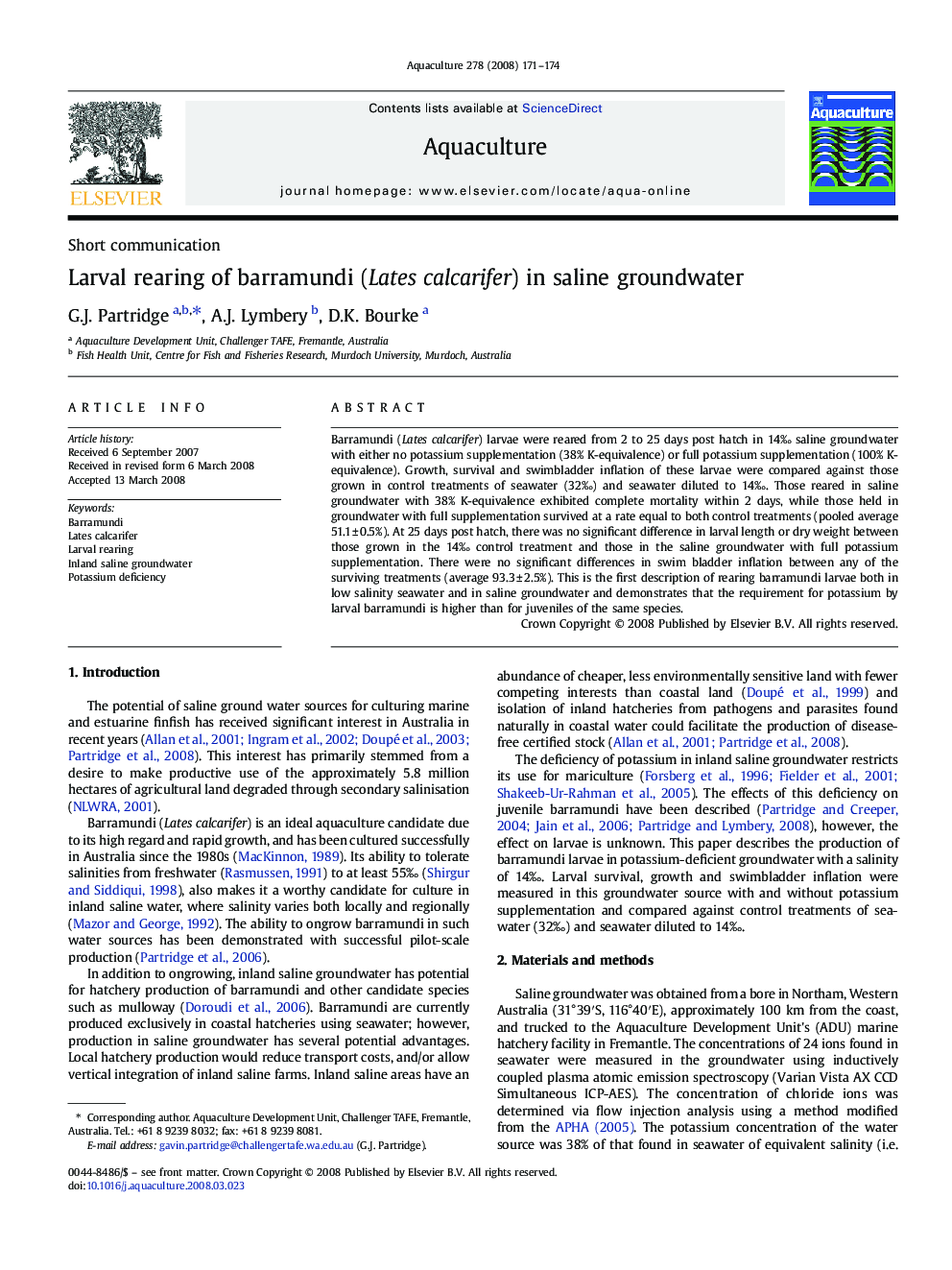| Article ID | Journal | Published Year | Pages | File Type |
|---|---|---|---|---|
| 2424658 | Aquaculture | 2008 | 4 Pages |
Barramundi (Lates calcarifer) larvae were reared from 2 to 25 days post hatch in 14‰ saline groundwater with either no potassium supplementation (38% K-equivalence) or full potassium supplementation (100% K-equivalence). Growth, survival and swimbladder inflation of these larvae were compared against those grown in control treatments of seawater (32‰) and seawater diluted to 14‰. Those reared in saline groundwater with 38% K-equivalence exhibited complete mortality within 2 days, while those held in groundwater with full supplementation survived at a rate equal to both control treatments (pooled average 51.1 ± 0.5%). At 25 days post hatch, there was no significant difference in larval length or dry weight between those grown in the 14‰ control treatment and those in the saline groundwater with full potassium supplementation. There were no significant differences in swim bladder inflation between any of the surviving treatments (average 93.3 ± 2.5%). This is the first description of rearing barramundi larvae both in low salinity seawater and in saline groundwater and demonstrates that the requirement for potassium by larval barramundi is higher than for juveniles of the same species.
